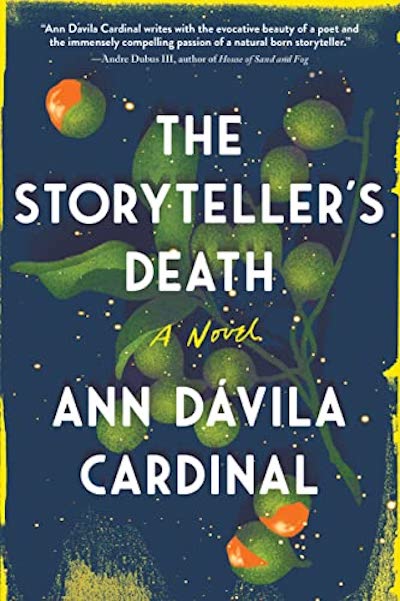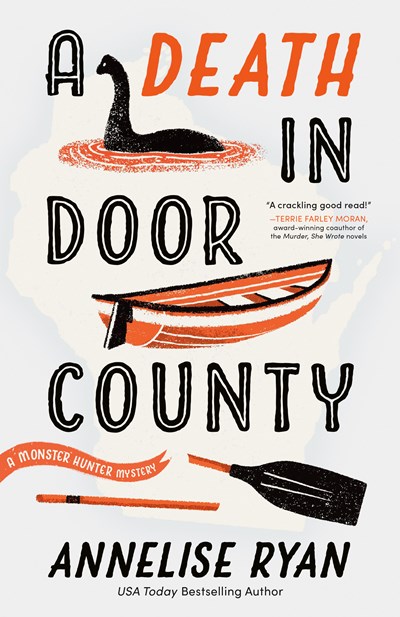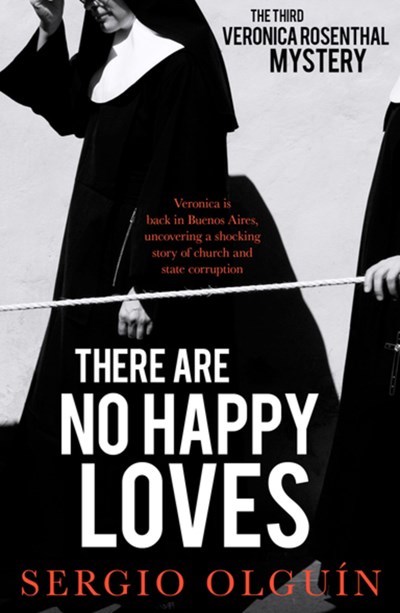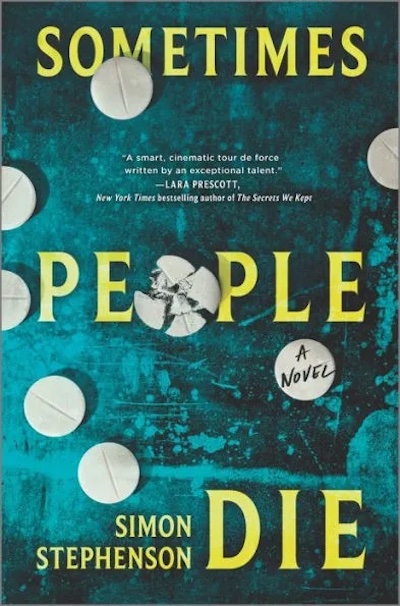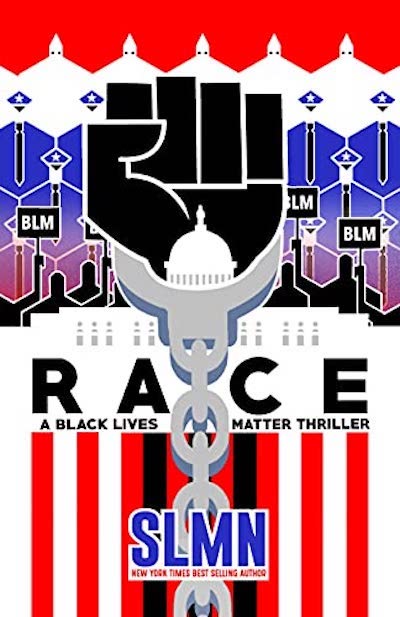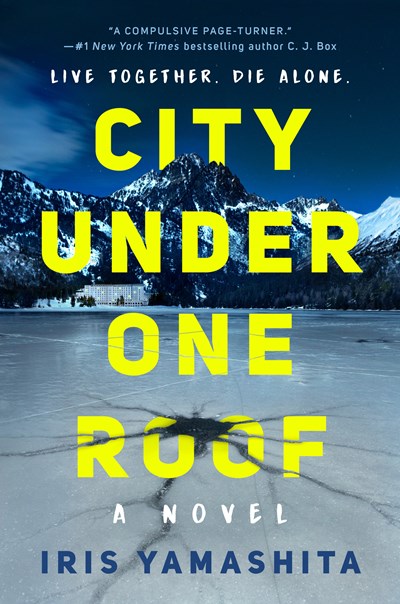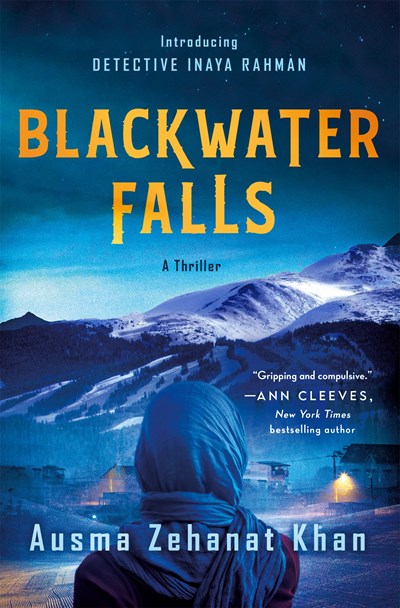Fraught connections between different worlds hold together this coming-of-age tale: connections between Puerto Rican families in the United States and their homeland; between the past and the present; between the real world and one made of stories. As the book opens, its shy protagonist, Isla Larsen Sanchez, is visiting her mother’s native Puerto Rico. Back in New Jersey, “everyone [looks] so colorless, like the underbelly of a fish,” but at least there she can do her own thing. The island, however, is overflowing with color but also with cheek-pinching aunts who expect proper behavior from a young lady with “not one drop of blood…that is not European.” Over the years, as she spends every summer in Puerto Rico, Isla comes to realize that her oh-so-pure blood may have given her…well, she’s not so sure it’s a gift. She sees visions of tales the cuentistas, storytelling women in her family, have told her—but only after their deaths. When one story involves a murder, and Isla finds that she can be physically hurt by weapons in the visions, readers find themselves dropped into a combination of magical realism, terror, and mystery, all wrapped in a shroud of family secrets and dubious honor. This rich story about stories can work as a crossunder, meaning it can be enjoyed by young adults as well as adult readers; Toni Morrison fans will particularly enjoy the otherworld-tinged drama
Mystery & Detective
They’re back! The quirky duo of sort-of psychic Leda Foley—she’s also a travel agent and sometime chanteuse—and Seattle P.D. detective Grady Merritt reunites to find two missing people. Leda is approached by a man whose sister has gone missing for a month—driving a bright-orange antique Volvo and with $30,000 in cash—and hopes that Leda can use her psychic powers to locate the woman. Has she been murdered, or has she finally given up on her adulterous husband and run off? Meanwhile, Grady’s dog has gone missing on Mount Rainier, only to pop up with a limb in his mouth. A leg, to be precise. A human leg. Unfortunately, it’s a male leg, so not from Leda’s missing person, but DNA proves that there is a relationship between the two. But where’s the rest of the body? With help from a delightful circle of friends, including Grady’s police partner and Leda’s best friend, the two develop plenty of hypotheses but nothing that will hold water. Fortunately, Leda’s psychic skills kick in, providing some much-needed clues to help resolve the mysteries. As in the first book, Grave Reservations, readers will delight in the banter between Leda and Grady while enjoying Leda’s struggle with her psychic gift. For cozy fans who can tolerate a bit of the macabre.
Morgan Carter is one unusual woman. A trained cryptozoologist—someone who searches for animals that haven’t been proven to actually exist, like Bigfoot and the Loch Ness Monster—she also owns the Odds and Ends bookstore in Door County, Wisconsin. Don’t expect to find any Jane Austen at Odds and Ends, but it has plenty of esoteric books about the natural world, jars filled with formaldehyde and weird specimens, not to mention mummified human remains. So when a few human corpses wash ashore on Lake Michigan with mysterious bite marks, who are you going to call? Morgan Carter! Thirty-something Morgan—accompanied by her lovely rescue dog, Newt—is at her happiest when seeking out cryptids. But Morgan has her own share of problems. Her parents, also cryptozoologists, were murdered just two years ago, and Carter feels a nagging responsibility for their deaths. Those deaths also left her hugely rich, which has created its own issues, especially in dating. This is full of local color, with a delightful cast, and has a completely unique premise; I can’t wait to introduce Morgan to readers, especially those seeking the unusual, the surprising, the off-beat.
What a wild ride this book is. The third in Olguin’s series set in Buenos Aires, it features the tough-hitting, brazen, flawed, but brilliant journalist Verónica Rosenthal, who loves her whiskey, her lapdog, her ex-boyfriend, and great sex, preferably with strangers. As the novel opens, there is a horrific car crash followed by an explosion, leaving one survivor, Darío, who becomes convinced that his wife and child didn’t die in the conflagration but survived and ran away. Is it possible? Later, a truck is pulled over in Buenos Aires, thought to contain drugs. But the cache is far more gruesome: a load of human body parts. Verónica pursues the missing wife and child, ultimately publishing a feature about a right-wing Catholic organization, the Christian Home Movement, which took young children from poor or single mothers and placed them in well-off Catholic families. At the same time, and unknown to Verónica, her ex-boyfriend is after the body smugglers, and eventually the two storylines converge, as do the lovers. But don’t for one minute think this is some linear thriller. This book ricochets from family drama to Argentinian history to the picaresque (Verónica in nun’s garb, infiltrating a convent) to the deeply emotional. While this can be read as a stand-alone, this series builds on itself wonderfully.
If you open this book thinking it’s a medical thriller—which is how it’s marketed—then you’ll be terribly disappointed. But take it on its own terms and it is one of the most evocative and heart-rendering tales you’ll have encountered in quite a while. A young Scottish doctor, caught stealing and using opioids, is deemed fit to return to practice and lands in St. Luke’s—one of London’s roughest hospitals and a place that’s desperately in need of staff. Author Stephenson was trained as a doctor, and this book goes deeply—and fascinatingly—into life in the hospital. Add to this a great cast of characters, including George, an orthopedist, rugby player, and teddy bear of a man who rooms with our protagonist, helping to keep him grounded. The criminal element comes into play when it’s discovered that several of St. Luke’s patients have died from opioid overdoses, clearly at the hands of medical personnel, with our narrator suspect number one. Woven throughout the book are the stories of doctors throughout history who doubled as serial killers—these sojourns away from the narrative will drive some readers crazy but I found the context they provided fascinating. In the end, the book comes down to just a few characters and a couple of questions: How does medicine, “a dark and a terrible knowledge,” force its practitioners to see things differently? And what’s the impact when they do see differently?
Reflecting the dark days of summer 2020, this book opens with Black reporter Caleb Moon covering the police killing of a Black boy and the local anger that has ensued. His editor is tiptoeing around the coverage and wants to cut the inflammatory detail that the police also shot the boy’s pet (“It’s just a fucking dog.”) He knows it’s relevant, though, when Caleb explains that the animal that three police officers found such a violent threat could fit in a colleague’s tiny purse. This is a case of overkill, and Caleb wants justice. He’s at first naïve enough to think that it might be in the cards, but then he attends the police chief’s speech about the situation, where white interlopers throw a bottle at the cops and disappear. Hope is close to vanishing; it evaporates entirely when a Black colleague is lynched. Things can hardly get worse, but Caleb soon finds himself in jail when he won’t plead guilty to causing trouble at the speech. His experiences in jail, coupled with the growing mystery of who’s behind the racist corruption eating away at his unnamed small town, paint a stark picture of a world built on greed and white supremacy. Readers will be eager to meet this understated, determined young protagonist in further mysteries. The book doesn’t reveal SLMN’s identity, but notes that he is a New York Times best-selling author and a movie producer.
Originally reviewed as Race: A Black Lives Matter Thriller
Benson is best known as the first American author of continuation James Bond novels, but apart from being fictional and starring a man, this unusual and excellent read is the furthest thing from 007 imaginable. The story starts with an omniscient, unnamed narrator introducing readers to Lincoln Grove, Illinois, where two back-to-back streets (map included) are the setting for what the gleeful narrator describes as an updated version of Thornton Wilder’s play “Our Town.” (Readers will also be reminded of Jim Carrey’s synthetic surrounds in “The Truman Show.”) Scott Hatcher is having an unusual day there, awaking to find his wife, Marie, gone. They haven’t been getting along but have agreed to postpone a divorce decision because it’s May 2020 and the world is in pandemic turmoil. When Scott finally reports Marie missing, it turns out that a neighbor’s husband is also AWOL, a man who has recently been the subject of both Marigold Way gossip and police attention as masks, drugs and other COVID-related items have been stolen from his job. As the missing-persons investigation becomes much more, the narrator’s cheerful, exclamation-point filled observations take on a sinister cast and the neighbors—this takes place almost solely in one setting, just like a play—all become suspect, their foibles and ambitions revealed. What a saga! As well as “Our Town,” readers can try this alongside Máirtín Ó Cadhain’s The Dirty Dust: Cré na Cille, which features a town’s dead folks gossiping together in a graveyard
How’s this for a setting: a 205 unit high-rise building in rural Alaska that houses the entire town’s population as well as stores, offices, and more. Welcome to Point Mettier, a pretty creepy village to begin with that only gets worse when body parts—a foot, a hand—wash up on the frozen shore. The local cops seem ready to shrug off the remains—lots of tourists fall off those cruise ships!—when they’re joined by Anchorage detective Cara Kennedy, who takes the matter a whole lot more seriously. What was meant to be a quick visit becomes a much longer excursion as the first brutal storm of the season moves in, closing off the tunnel, the one way in and out of town during winter. With time to spare, Cara digs deeper into the community, only to discover that almost everyone in Point Mettier has a secret to hide. A simmering romance with one of the other officers provides Cara with much needed distraction, but soon enough a violent gang, hanging out in a nearby Native village, takes center stage. This is a successful, well-paced first novel that juggles a range of cultures, a handful of strong characters, and a nuanced protagonist, delivering a very satisfying ending. And get this: Point Mettier pretty much actually exists. Check out Whittier, Alaska.
Inaya Rahman is stuck between two worlds. She’s a detective with the Community Response Unit of the Denver police department, which was created after 2020’s protests against police brutality. When she’s called to a horrific scene —a little girl, Razan Elkader, has been murdered and nailed to the door of the mosque where Rahman worships—she knows she can help, but she’s facing her usual problem: “too brown for the badge, too blue for her co-religionists.” She forges on, in private dealing with her family’s worries that the police force is too dangerous and her mother’s fretting that Inaya isn’t married yet. Outside forces are far less gentle: a biker gang affiliated with a local Evangelical church is far from happy that Syrian refugees have settled in the town and none too worried about bringing Razan’s murderer to light. Khan’s (Esa Khattak and Rachel Getty Mysteries, Khoran Archives Fantasy Novels) fast-moving but thoughtful series debut goes far beyond newcomers-vs.-racists tropes to look at real life in a changing town. Rahman is a tough, lovable and often funny protagonist who will appeal to fans of Joanna Schaffhausen’s Annalisa Vega.
Hopes and fears are nested within secrets and lies in this historical romance/spy novel that moves from English drawing rooms to the 1936 Berlin Olympics. The same fraught layers form the novel, which sees pensive Viviane Alden travel to Germany with her flighty stepsister, Julia, to visit eligible distant acquaintances. The author’s note from Canadian author Cornwall (The Woman at the Front) explains that right up till 1939, intermarriage of English and German aristocracy was encouraged as a way to avoid a repeat of the Great War. The young women are matched with Otto and Felix, sons of the house, who, like Viviane and Julia, show how different siblings can be. Otto is a devoted Nazi who’s rising in the ranks, while his brother, a chemist who flaunts his family’s expectations by working with a Jewish Nobel prize winner, wants none of his brother’s fascist displays. Berlin during Hitler’s reign, and the fawning of international celebrities who thought the dictator a buffoon who’d soon disappear, are chillingly portrayed here. They form an ever more sinister backdrop to Viviane’s clandestine photography of wartime activities in partnership with a dashing journalist/spy. This has an air of Ian McEwan’s Atonement, with its sweeping vistas and wartime romance; fans of the debutante politics of Bridgerton will find intrigue here too.

